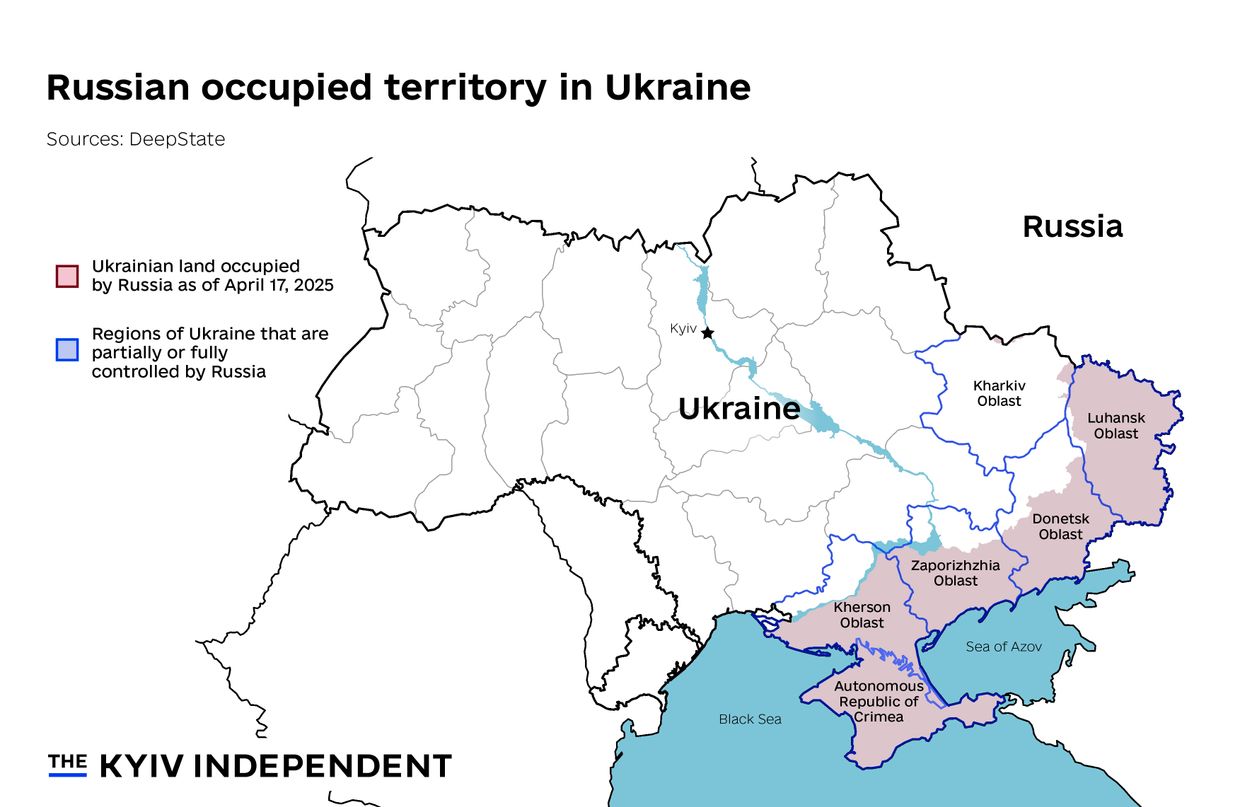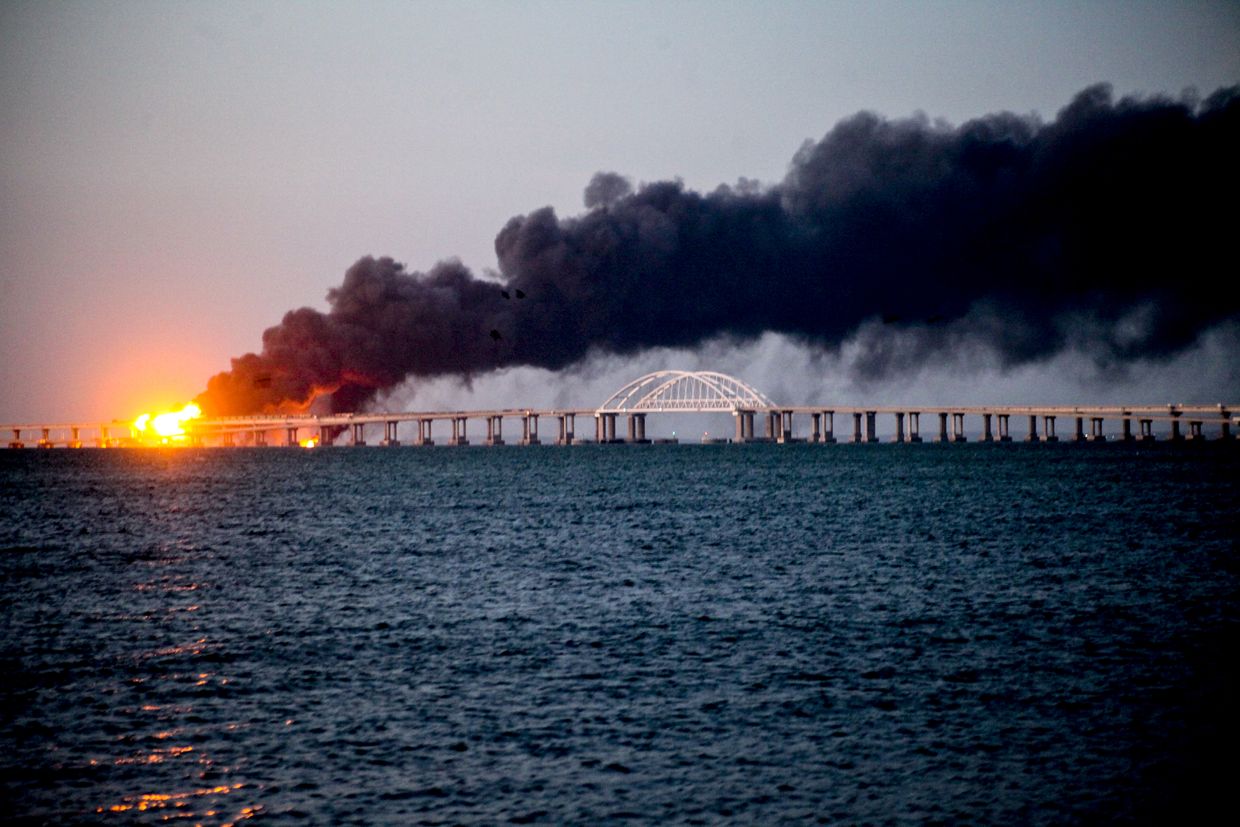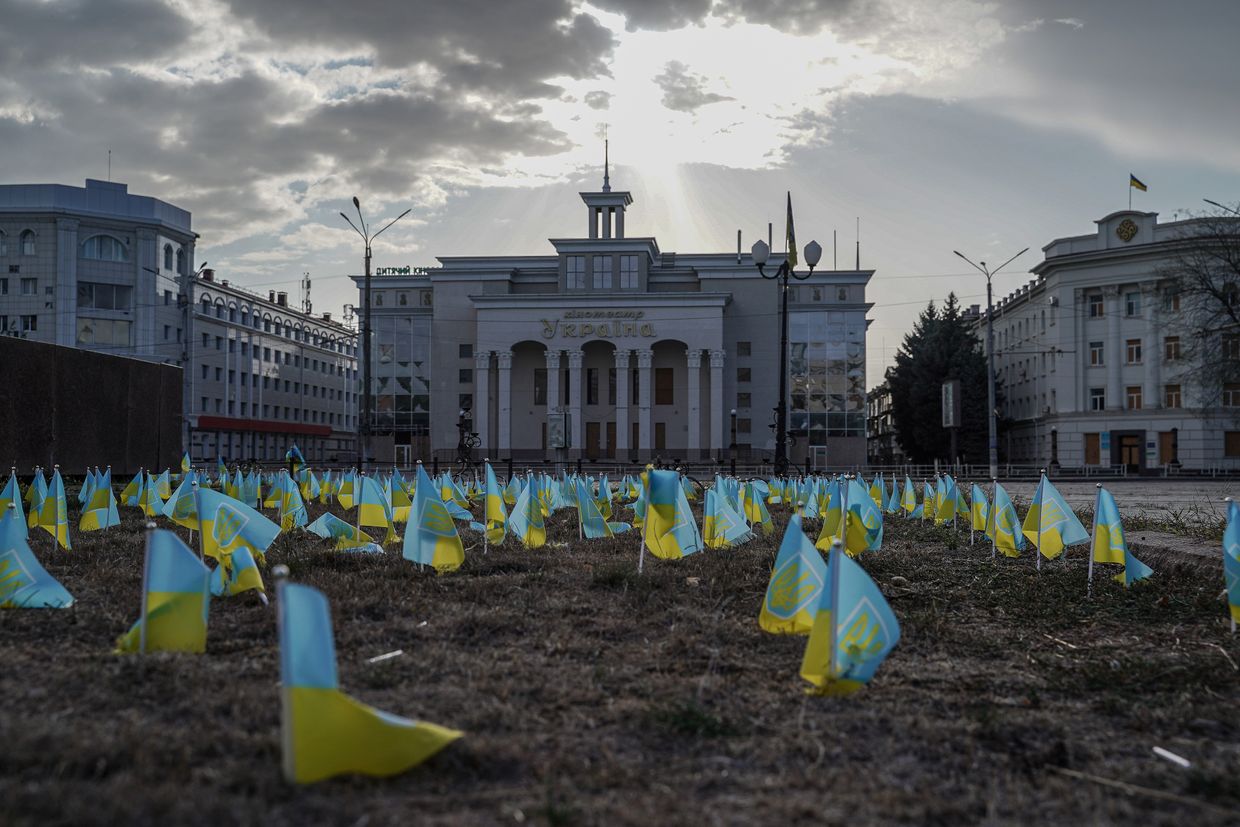As U.S. officials continue to push for a ceasefire between Russia and Ukraine, five Ukrainian territories have emerged as a central focus — and sticking point — in the negotiations.
“This peace deal is about these so-called five territories,” U.S. special envoy Steve Witkoff said in comments to Fox News on April 14, understood to be the Ukrainian regions of Crimea, Zaporizhzhia, Kherson, Donetsk, and Luhansk.
Russia illegally declared ownership over Crimea in 2014 and over the other four regions in 2022 after its full-scale invasion, moves widely condemned by the global community.
Russia now occupies large portions of the territories, but has failed to capture all the land. It has repeatedly demanded international recognition of the regions as Russian and that Ukrainian troops completely withdraw from them as part of any peace negotiations.
Such a move would go much further than simply freezing the current battle lines, where Russia currently controls around 20% of Ukraine’s territory. It would permanently surrender to Russia four of Ukraine’s 24 oblasts as well as the autonomous Ukrainian region of Crimea — historic national lands home to millions of Ukrainians.
President Volodymyr Zelensky, responding to Witkoff’s recent comments, reiterated that Ukraine is prepared to negotiate a ceasefire but will not recognize these territories as Russian.
“I do not see any mandate for him (Witkoff) to speak about Ukrainian territories. These lands belong to our people, to our nation, and to the future generations of Ukrainians,” Zelensky said during a press briefing on April 17.
What is the current status of these regions?
Moscow illegally invaded and annexed Crimea in 2014, marking the effective start to Russia’s ongoing war. It has occupied the peninsula ever since.
The War in Donbas began weeks later, after Russian troops invaded and occupied eastern portions of Luhansk and Donetsk that bordered Russia, causing the displacement of millions of Ukrainians. At the time, Russia denied involvement and framed the invasion as a separatist movement, claims that have since been disproven.

Portions of Luhansk and Donetsk oblasts remained under occupation over the next decade, including the capital cities of each region.
In 2022, Russia expanded the war with its full-scale invasion of Ukraine.
Millions more Ukrainians since then have fled Russian-controlled territories, though others remain living under occupation. Human rights groups have documented widespread torture, unlawful detention, and forcible disappearance of civilians living in Russian-occupied areas.
Russia occupies 99% of Luhansk Oblast, 66% of Donetsk Oblast, and 73% each of Zaporizhzhia and Kherson oblasts, according to geolocation estimates from the Institute for the Study of War (ISW). It occupies a small percentage of land in Kharkiv Oblast, but does not hold any major settlements there.
The Ukrainian-controlled portions of Zaporizhzhia and Kherson include their major regional capitals, where hundreds of thousands still live and are subjected to frequent Russian drone and missile attacks.
According to the ISW, Russia is unlikely to capture the rest of these territories in the near term, “if at all.”
Why are they important for negotiations?
For Ukraine, ceding sovereignty is a “red line” that Kyiv has said it will not cross in negotiations.
During the first years of the full-scale invasion, Zelensky insisted that any peace deal must restore all of Ukraine’s territory. His position softened this year, with Zelensky signaling that he could accept temporary occupation of land Russia has seized, but that Ukraine would not give up its legal claims to the land.
Only 8% of Ukrainians would be willing to fully withdraw Ukrainian troops from Donetsk, Luhansk, Kherson, and Zaporizhzhia oblasts to end the war. Less than 5% would be willing to recognize those regions as Russian, according to a poll published March 20 by the Razumkov Center, a Kyiv-based public policy think tank.
While Ukraine has made compromises to reach a deal, Russia has signaled no willingness to make concessions or back off its demands of ownership over the territories. It also continues to demand other restrictions on Ukraine, such as limiting its ability to join NATO and the size of its military. It has also called for a change in Ukraine’s leadership.
The fate of these territories could prove to be a roadblock to negotiations, which have largely stalled after Russia refused to agree to a 30-day ceasefire that Ukraine was prepared to sign.
The eastern and southern regions Russia is seeking to control have historically been Ukraine’s industrial powerhouse, home to crucial mining resources and engineering facilities that were involved in global trade prior to the invasion.
Another reason for Russia’s interest in the four territories it claimed since the full-scale invasion is that these regions create a strategically valuable land bridge to Crimea from Russia’s mainland. Currently, the only access from Russian territory to Crimea is through the Kerch Bridge, a 19-kilometer (12-mile) bridge built by the Kremlin after Russia annexed the peninsula.

The bridge serves as a vital supply route to Crimea and has repeatedly been disabled by Ukrainian attacks throughout the war.
Control over the five territories would also give Russia full control over the Sea of Azov, an important access route to the Black Sea.
What is the U.S. stance on these regions?
The U.S. continues to recognize Ukraine’s sovereignty over these territories, but recent comments from Witkoff have alarmed Ukraine’s supporters.
After a meeting between Witkoff and Russian President Vladimir Putin, Witkoff reportedly told Trump that giving Russia ownership over these territories would be the fastest way to secure a ceasefire deal.
Witkoff has also repeated Russian narratives about sham referenda held in the occupied regions, claiming that Ukrainians in these regions voted to be part of Russia. He was denounced in Ukraine and abroad for failing to recognize that the referenda were held effectively at gunpoint, with widespread intimidation from occupying forces.
While he has taken the lead role in negotiations with Russia, his views are not held throughout the entire administration.
According to the Wall Street Journal, U.S. Secretary of State Marco Rubio and U.S. Special Envoy for Ukraine Keith Kellogg are urging President Donald Trump to resist territorial concessions to Moscow.
On April 18, Rubio suggested that the U.S. may end its attempt to negotiate a peace deal between Ukraine and Russia if there are no signs of progress in the coming days.
‘Territories are first and foremost people:’ Zaporizhzhia, Kherson residents anxiously watch Witkoff debate the land they live on
Zaporizhzhia — During what would usually be evening rush hour in Zaporizhzhia, cars move easily through main streets that were once choked with traffic. As the shadows grow longer, soldiers calmly remove camouflage netting from the air defense weapons they’ll man against Russia’s deadly attacks unti…





